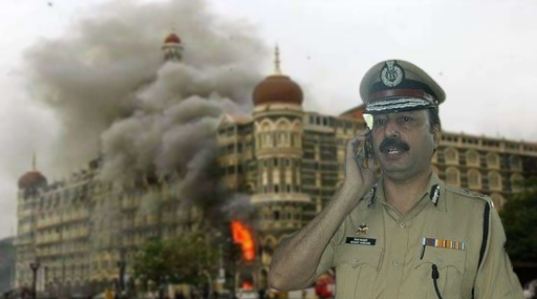13 years ago, India witnessed its worst terror attacks. 26/11 is still fresh in public memory. Images and visuals from Taj and Oberoi Hotels, the CST terminal, Cama Hospital, Nariman House and other locations where terrorists slaughtered innocent people are still vivid in our nation’s memory. It is apt for us to discuss a rather untouched subject of 26/11 on the 13th anniversary of the attacks. Hemant Karkare, Ashok Kamte and Vijay Salaskar – three of Mumbai’s most important police officers were allegedly gunned down by terrorists as they happened to meet up and rush to Cama hospital, to take on well-armed and trained terrorists. At least that is what we are told to believe.
But should we? Are we sure that there was foul play involved in the deaths of these three policemen? Of particular concern is the death of Hemant Karkare. A day before 26/11, Hemant Karkare was restless. He was worried, almost in anticipation of a mishappening. Rohini Salian, former special public prosecutor in the 2008 Malegaon blast case met Karkare a day before the attacks. Salian said, “He was under unseen pressure. I told him he was a good Hindu and should do his job as his dharma. I told him she (Sadhvi) was doing her dharma and he should do his.”
According to Hemant Karkare’s wife, Hemant Karkare was considering quitting his job as chief of the Maharashtra police Anti-Terrorism Squad and joining some multinational firm to experiment with new ideas. Kavita Karkare, his wife, said, “But his dream remained unfulfilled.” Why would a man who was having the time of his life serving political interests as a policeman want to quit his job?
In 2018, the Supreme Court dismissed the plea of a former senior police officer of Maharashtra alleging a conspiracy in the death of former state Anti-Terrorism Squad (ATS) chief Hemant Karkare in the 26/11 Mumbai terror attacks. The top court said it cannot reopen the case as terrorist Ajmal Kasab’s conviction was upheld and the death sentence has been executed. The plea, by former Maharashtra IG S M Mushriff, alleged that Karkare was a victim of some conspiracy by “some other persons”.
What makes this case even murkier is this. 13 years later, Retired Assistant Police Commissioner Samsher Khan Pathan has claimed former Mumbai police commissioner Param Bir Singh, who is currently absconding, “destroyed” a mobile phone seized from the 26/11 terror attack convict Mohammed Ajmal Kasab. According to Pathan, Param Bir Singh – who back then was posted as a DIG with the anti-terrorism squad, took Ajmal Kasab’s mobile phone from the custody of a constable and never returned it. Param Bir Singh did so without intimating his seniors, thus raising suspicion on the motives behind such an unwarranted and brazen seizure by a man who is known to have political connections and who during his tenure as a senior police functionary remained a loyal pet of many political masters. It is to be noted that, on the night of 26/11, Ajmal Kasab was one of the two Pakistani terrorists who happened to ‘run into’ the three police officers including Hemant Karkare and gunned them down.
What Does This Suggest?
Hemant Karkare was no ordinary police officer. He was, by far, India’s most favoured policeman at the time. He was a favourite of the then UPA government. For all high-voltage political cases, and ones that served the purpose of the Congress government, Karkare was the man who was roped in. In 2008, the focus before the 26/11 attacks was on the Malegaon bomb blast, in which the Congress tried to spin a false narrative of Hindu terror engulfing India.
Here too, Karkare was the man doing Congress’ dirty job, as he arrested Pragya Thakur, Lt Col Shrikant Prasad Purohit, Shankaracharya Swami Dayanand Pandey and some Abhinav Bharat members for allegedly conspiring and planting an RDX bomb and executing the blast that killed six.
Read more: ‘Neutral Media’s sudden recollection of Hemant Karkare
Hemant Karkare was accused of arresting individuals without evidence and torturing them in custody in the most horrifying of ways. It must be remembered that 26/11 came at a time when the Congress party was trying to cook a malicious and false narrative of ‘Hindutva terror’.
The Pakistani terrorists who attacked Mumbai were wearing kalawas – the sacred threads worn by Hindus, on their wrists. Why were they wearing these threads? Was the then Indian government conspiring with Pakistan to invent Hindu terror, or did Pakistan take a cue from the UPA’s book of inventing Hindutva terror in India, and decide to act independently?
In either case, when it came to ‘Hindu terror’ – Hemant Karkare knew everything. He was an asset for the Congress party, but if he chose to turn against them, the man would become one of UPA’s biggest liabilities which could bring the then government to its knees. Is it therefore possible that terrorists did not gun down Hemant Karkare, and he was taken down by his people?
Hemant Karkare seems to have had turned into a spent force for Congress. Being a man who knew exactly what Congress was up to, his death may have come as a sigh of relief for people in the top echelons of government back then.
